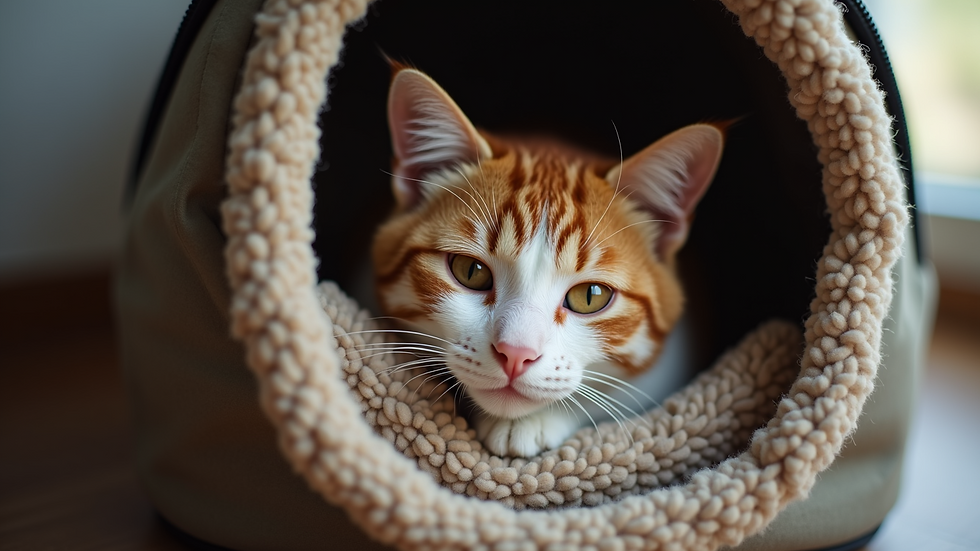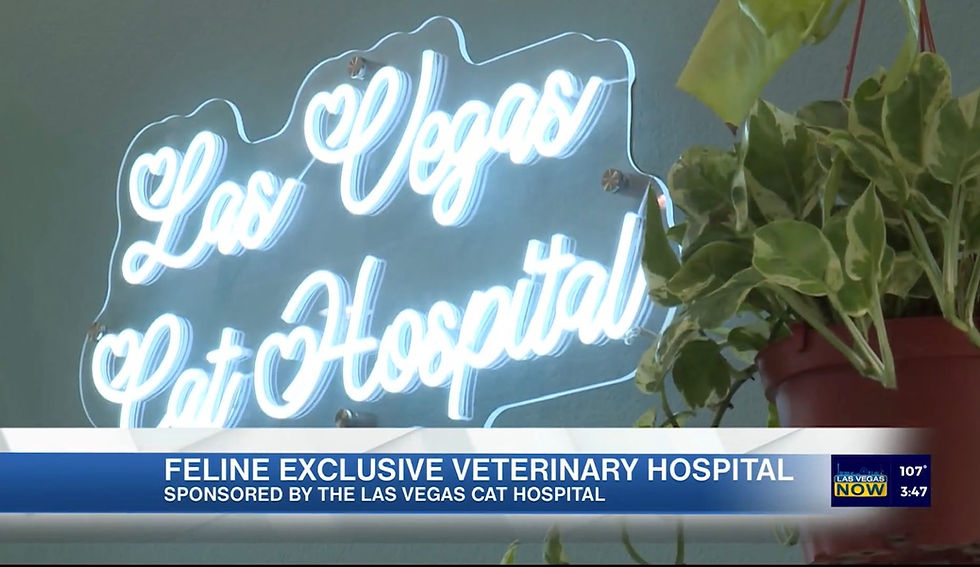Understanding Cat Anesthesia: What You Need to Know
- thecathospitallv
- Aug 9
- 5 min read
Updated: Aug 18
When your beloved cat needs surgery or a medical procedure, the thought of anesthesia can be worrying. We understand how scary it feels to imagine your furry friend under anesthesia. But knowing more about feline anesthesia safety can help ease your mind. It’s a common and carefully managed part of veterinary care, especially at places like the Las Vegas Cat Hospital, where your cat’s comfort and safety are top priorities.
Let’s walk through what anesthesia means for cats, how it’s used, and what you can expect before, during, and after the procedure. We’ll share practical tips and clear explanations to help you feel confident and prepared.
Why Feline Anesthesia Safety Matters
Cats are unique creatures with their own special needs. Their bodies react differently to medications than dogs or humans do. That’s why feline anesthesia safety is so important. Vets who specialize in cats understand these differences and tailor their approach accordingly.
Anesthesia allows your cat to undergo procedures without pain or stress. But it also carries risks, especially if your cat has underlying health issues or is older. That’s why a thorough health check and careful monitoring are essential.
At the Las Vegas Cat Hospital, the team uses the latest technology and protocols to keep cats safe. They monitor vital signs like heart rate, breathing, temperature, blood pressure, and oxygen levels throughout the procedure. This close watch helps catch any issues early and ensures your cat wakes up comfortably.
Here are some key reasons why feline anesthesia safety is critical:
Cats have sensitive livers and kidneys that process drugs differently.
Stress can affect how cats respond to anesthesia.
Older cats or those with health problems need protocol tailored to their needs.
Proper protocol and monitoring reduces the risk of complications.

Preparing Your Cat for Anesthesia: What You Can Do
Preparation is a team effort between you and your vet. Before anesthesia, your cat will need a full physical exam and possibly blood tests. These tests check organ function and overall health to make sure anesthesia is safe.
You’ll likely be asked to withhold food for several hours before the procedure. This reduces the risk of vomiting and aspiration while your cat is unconscious.
Here are some practical tips to prepare your cat:
Follow fasting instructions carefully. Usually, no food for 8-12 hours before anesthesia.
Keep your cat calm and comfortable. Stress can affect anesthesia outcomes.
Provide a quiet, familiar space before the appointment. This helps reduce anxiety.
Share your cat’s medical history with the vet. Include any medications or allergies.
Ask questions about the procedure and recovery. Knowing what to expect helps you feel more at ease.
Remember, your vet’s goal is to make the experience as smooth and safe as possible for your cat. Don’t hesitate to speak up if you have concerns.

What Kind of Anesthesia Is Used on Cats?
Understanding the types of anesthesia used can help you feel more comfortable with the process. Cats typically receive a combination of medications tailored to their needs.
Here are the common types of anesthesia used on cats:
Pre-anesthetic medications: These help relax your cat and reduce pain. They may include sedatives and pain relievers.
Injectable anesthesia: Given through a vein or muscle, this induces unconsciousness quickly.
Inhalant anesthesia: Delivered through a breathing tube, this keeps your cat asleep during the procedure. It’s easy to adjust and control.
Local anesthesia: Sometimes used to numb a specific area, reducing the need for deeper anesthesia which improves recovery times.
Dr. Love chooses the safest combination based on your cat’s health, age, and the procedure type. We also use advanced monitoring equipment to track your cat’s vital signs continuously.
If you want to learn more about the specific medications and protocols, the cat anesthetics page at Las Vegas Cat Hospital offers detailed information.

What Happens During and After Anesthesia?
During the procedure, your cat will be closely monitored by trained professionals. They watch heart rate, breathing, temperature, blood pressure, CO2 levels and oxygen levels. This constant attention helps catch any changes early.
After the procedure, your cat will be moved to a quiet recovery area. The vet team will continue to monitor your cat as they wake up. Some cats may feel groggy or disoriented for a few hours. Others might be a bit sleepy for the rest of the day.
Here’s what you can expect during recovery:
Your cat will benefit from having a warm and cozy in a soft bed available to them.
They might want to hide or rest quietly.
Appetite usually returns within 12-24 hours.
Mild soreness or discomfort is normal but should improve quickly.
If you notice anything unusual like difficulty breathing, vomiting, or extreme lethargy, contact your vet immediately.
Tips for helping your cat recover at home:
Keep your cat indoors and in a quiet space.
Provide fresh water and small amounts of food once fully awake.
Follow any medication instructions carefully.
Avoid letting your cat jump or play vigorously until cleared by the vet.
How to Choose the Right Veterinary Care for Your Cat’s Anesthesia
Choosing a vet who specializes in feline care makes a big difference. Cats are not just small dogs - they need experts who understand their unique needs.
Look for a veterinary hospital that:
Has experienced staff trained in feline anesthesia safety.
Uses modern monitoring equipment.
Offers a calm, cat-friendly environment.
Communicates clearly and answers your questions.
Provides detailed pre- and post-anesthesia care instructions.
The Las Vegas Cat Hospital is dedicated to creating a fear-free experience for every cat. Their team focuses on gentle handling and personalized care to reduce stress and ensure safety.
When you trust your cat’s anesthesia care to specialists, you can feel confident that your furry friend is in good hands.
Supporting Your Cat’s Health Beyond Anesthesia
Anesthesia is just one part of your cat’s overall health journey. Keeping your cat healthy with regular check-ups, vaccinations, and a balanced diet helps reduce risks during any medical procedure.
Here are some ongoing tips to support your cat’s well-being:
Schedule annual wellness exams.
Maintain a healthy weight through proper diet and exercise.
Monitor for any changes in behavior or appetite.
Keep your cat’s environment safe and stress-free.
Discuss any concerns with your vet promptly.
By staying proactive, you help your cat live a long, happy life with fewer health surprises.
I hope this guide helps you feel more at ease about feline anesthesia safety. Remember, your cat’s comfort and well-being are the top priority for the veterinary team at Las Vegas Cat Hospital. With the right care and preparation, anesthesia can be a safe and smooth experience for your cherished companion.




Comments